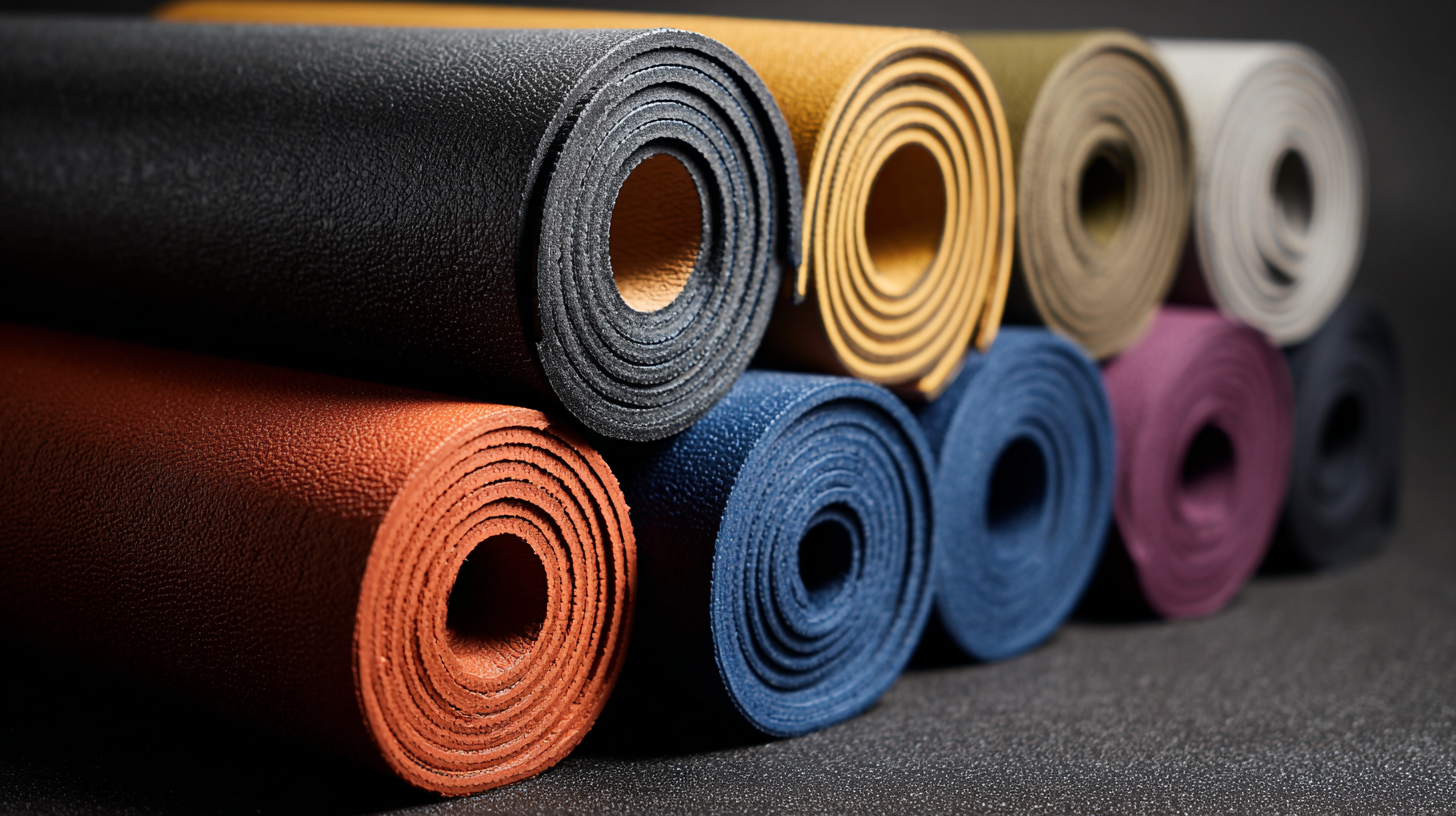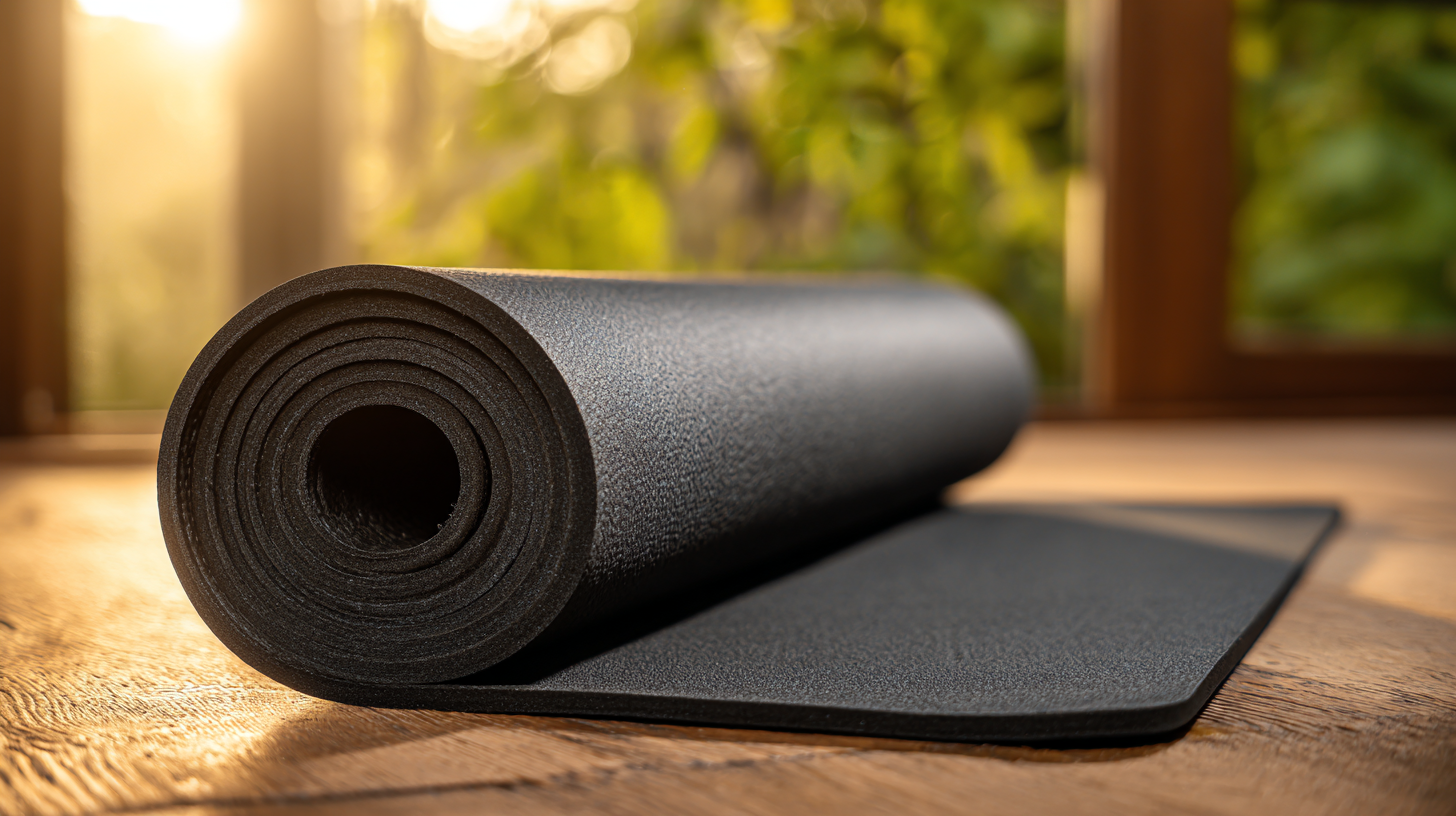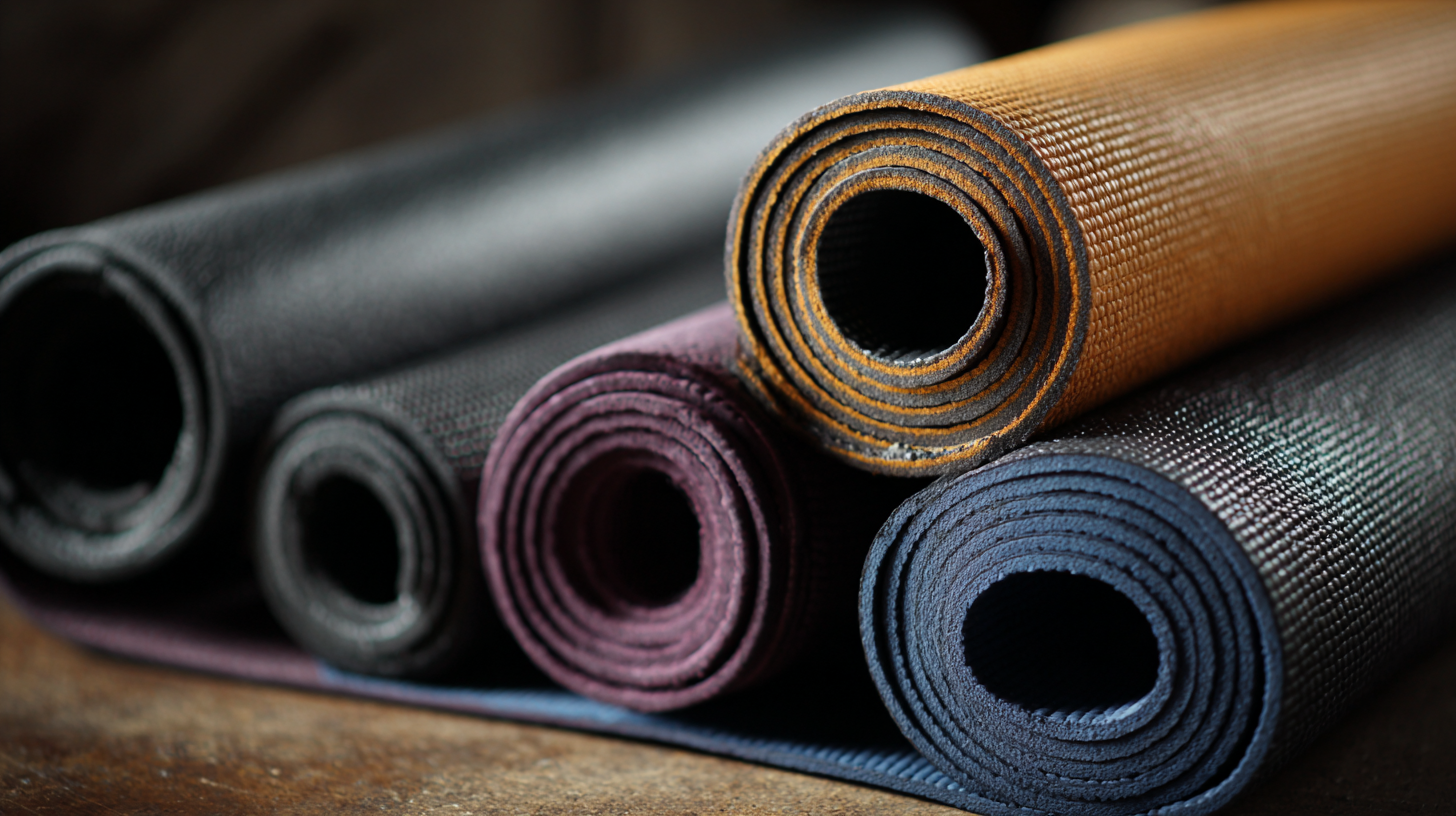In recent years, the demand for high-quality yoga mats has surged, with the global yoga mat market projected to reach USD 22.94 billion by 2026, according to a report by Market Research Future. Among the various materials available, the Rubber Yoga Mat stands out for its eco-friendliness and superior grip, making it a popular choice among both seasoned yogis and beginners.
 Industry experts highlight that natural rubber mats not only provide enhanced comfort and stability during practice but also contribute to sustainability efforts, appealing to environmentally conscious consumers. As a result, understanding the top features of the best Rubber Yoga Mats is crucial for global buyers looking to invest in a product that aligns with their yoga journey and lifestyle choices.
Industry experts highlight that natural rubber mats not only provide enhanced comfort and stability during practice but also contribute to sustainability efforts, appealing to environmentally conscious consumers. As a result, understanding the top features of the best Rubber Yoga Mats is crucial for global buyers looking to invest in a product that aligns with their yoga journey and lifestyle choices.
When selecting rubber yoga mats, several key factors can significantly influence performance and usability. First and foremost, the density and thickness of the mat are paramount. A study conducted by the Yoga Alliance revealed that mats with a thickness of 4-6mm provide optimal cushioning and stability, catering to practitioners across various levels. This thickness range helps in absorbing impact while offering enough support during standing and balancing poses.
 Another essential factor to consider is the texture of the mat's surface. According to a survey by Mindbody, 70% of yoga practitioners prioritize grip when choosing a mat, as it enhances safety and confidence during poses. High-quality rubber mats, particularly those made from natural rubber, offer superior traction due to their porous surface. This not only prevents slipping during intense sessions but also promotes better alignment and overall performance, making them a preferred choice among both beginner and advanced yogis.
Another essential factor to consider is the texture of the mat's surface. According to a survey by Mindbody, 70% of yoga practitioners prioritize grip when choosing a mat, as it enhances safety and confidence during poses. High-quality rubber mats, particularly those made from natural rubber, offer superior traction due to their porous surface. This not only prevents slipping during intense sessions but also promotes better alignment and overall performance, making them a preferred choice among both beginner and advanced yogis.
Additionally, eco-friendliness is becoming increasingly important for global buyers. Research shows that 62% of consumers prefer materials that are sustainable and non-toxic, underscoring the demand for mats made from natural sources. Choosing mats labeled as free from harmful chemicals not only supports personal health but also aligns with a growing commitment to environmental responsibility in fitness products.
When it comes to choosing the perfect rubber yoga mat, several key features define its quality and suitability for practitioners. First and foremost, the material is crucial. High-quality rubber mats are typically made from natural rubber, ensuring a strong grip and durability. This type of material not only provides excellent traction but also adds a level of cushioning, enhancing comfort during various poses.
Another essential feature is the thickness of the mat. Depending on individual preferences and practice styles, mats come in various thicknesses, including thin, medium, and thick options. Thicker mats offer more cushioning for sensitive joints, making them ideal for practitioners who may require additional support. Moreover, the texture of the mat influences performance; a textured surface can prevent slipping, ensuring stability during practice.
Finally, eco-friendliness is increasingly becoming a priority for buyers. Mats made from natural rubber are more sustainable than their PVC counterparts, appealing to environmentally conscious consumers. As the yoga and Pilates mat market continues to grow, these essential features will help practitioners make informed choices, ensuring a better overall experience on their wellness journey.
This chart illustrates the key features that consumers consider when selecting rubber yoga mats. The data represents the importance rating on a scale from 1 to 10.
As the wellness industry continues to evolve, the demand for eco-friendly products has surged, and rubber yoga mats are at the forefront of this trend. Made from natural rubber, these mats not only provide excellent grip and durability but also boast sustainable characteristics that appeal to environmentally conscious consumers. The use of eco-friendly materials in yoga mats has shifted the market dynamics, as buyers increasingly prioritize both performance and environmental impact in their purchasing decisions.
Furthermore, the popularity of eco-friendly rubber yoga mats has sparked a broader conversation about sustainability within the fitness community. Brands are now focusing on transparent sourcing and production methods, catering to a demographic that values ethical consumption. This shift has led to innovative designs and features that enhance user experience while minimizing ecological footprints. As a result, the trend towards sustainable yoga mats is likely to influence market trends and development strategies for years to come, reinforcing the connection between health, wellness, and environmental responsibility.
| Feature | Description | Popularity Rank (2023) | Eco-Friendly Material Impact (%) |
|---|---|---|---|
| Texture | Provides grip and prevents slipping during practice. | 1 | 75 |
| Thickness | Provides cushioning for the joints and comfort during long sessions. | 2 | 68 |
| Durability | Resists wear and tear, maintaining quality over time. | 3 | 80 |
| Eco-Friendliness | Made from natural rubber, reducing environmental impact. | 4 | 90 |
| Weight | Lightweight for easy transport, ideal for classes or travel. | 5 | 65 |
When it comes to purchasing rubber yoga mats, understanding consumer preferences is crucial for brands aiming to secure a competitive edge in the market. As per a recent report by ResearchAndMarkets, the global yoga mat market is projected to grow at a CAGR of 6.5% from 2021 to 2026, indicating an increasing demand for high-quality products that enhance the yoga experience. Among various materials, rubber mats stand out for their excellent grip, durability, and eco-friendliness, aligning with the values of health-conscious consumers.
Leading brands like Manduka, Jade Yoga, and Liforme have emerged as the frontrunners in the rubber yoga mat segment. Manduka's PRO Yoga Mat, for instance, is favored for its unmatched lifetime warranty and high-density cushion that appeals to frequent practitioners. Jade Yoga, known for its commitment to sustainability, has gained traction due to its natural rubber sourced from rubber trees. Meanwhile, Liforme has captured the market's attention with its alignment guide feature, which resonates with yoga enthusiasts looking to enhance their practice. According to a survey from IBISWorld, 70% of yoga practitioners prioritize mat performance and eco-friendliness, driving brand loyalty and consumer satisfaction in their choices.
When selecting the best rubber yoga mats, assessing thickness, grip, and durability is crucial for making an informed choice. Thickness plays a significant role in your comfort and support during yoga sessions. Generally, mats range from 1/16 to 1/4 inches in thickness. Thicker mats provide added cushioning, which can be beneficial for practitioners with joint issues, whereas thinner mats offer stability during balancing poses. Therefore, consider your personal preference and the type of yoga you practice.

Grip is another essential factor. A mat with an excellent grip prevents slipping, allowing you to maintain better posture and alignment throughout your practice. Look for mats made from high-quality rubber, as they often feature a textured surface designed to enhance traction. Testing the grip in both dry and slightly sweaty conditions can help you identify which mat suits your needs best.
Lastly, durability should not be overlooked. The best rubber yoga mats are built to withstand regular use without deteriorating. Opt for mats that feature eco-friendly materials and high-quality construction, as these will ensure longevity without compromising on performance.
Tips: Always check for additional features like portability and ease of cleaning when choosing a mat. If possible, try different mats at a local studio to find the perfect fit for your practice style. Regularly clean and store your mat properly to extend its lifespan.
